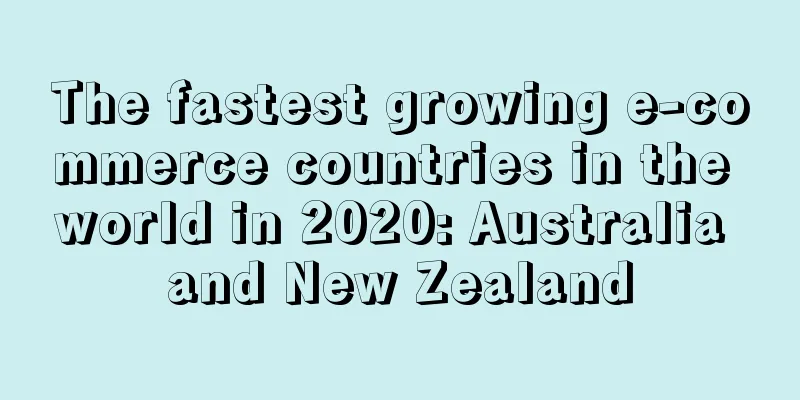PayU releases global e-commerce market report, these new demands are still growing

|
According to a new study by MasterCard , South Africa's e-commerce industry is growing, and online retail sales in the region have been increasing during the epidemic lockdown . Recently, PayU released its own report on the global e-commerce market as a payment company, analyzing the world's rapidly growing but easily overlooked markets from four currently hot e-commerce fields. One of them is South Africa.
Among the countries where the e-commerce market maintains rapid development , the fashion and luxury goods industry is the industry with the highest consumer spending.
From a global market perspective, India 's fashion market is expected to reach US$16 billion by the end of 2021 , followed by Indonesia at approximately US$9 billion, and Russia, Poland and Turkey in third place . Brazil 's annual consumer e-commerce spending in this area will also be particularly high.
The global pandemic has also brought changes to education, with remote learning and virtual classes becoming the norm.
Mexico and Argentina saw the largest increases in education spending on the PayU platform between 2019 and 2020 , at 139% and 138% respectively. However, the largest increase in average online education spending in 2020 was in South Africa , which increased by $136 compared to the average spending in 2019 .
PayU’s data clearly shows that Latin America is a concentrated region for beauty and cosmetics consumption , with a regional growth rate of 133%. At the same time, data analysis shows that in 2020, the region’s total online spending on beauty and cosmetics reached nearly US$3.8 billion.
Another large category for global consumer spending is digital goods. According to PayU data, consumers in Chile and Argentina were particularly inclined towards digital goods in 2020, with spending in these countries increasing by 211% and 131%, respectively.
In Argentina, consumer spending in the sector is expected to reach $615 million by the end of 2021. Some African markets have also performed unexpectedly strongly, with Kenya and Nigeria seeing year-over-year growth rates of 42% and 32% for digital goods in 2020, respectively.
In fact, in the UK, France, and Germany in Europe, Canada and the US in America, and Asia, e-commerce and cross-border e-commerce competition is becoming increasingly fierce. In regions such as Latin America, Central and Eastern Europe, Africa, India, and Southeast Asia, the disposable income of the population groups has increased, and the penetration rate of the Internet and mobile devices is in a stage of rapid growth . The demand of this part of consumers for global procurement of goods should not be underestimated.
In a sense, trying new markets first is another direction for some e-commerce companies that are still struggling in saturated mature markets . PayU E-commerce market |
>>: Flipkart partners with Adani to strengthen its supply chain infrastructure
Recommend
What is Ledger? Ledger Review, Features
Founded in 2014 and headquartered in Paris and Sa...
What is ComfortFirst? ComfortFirst Review, Features
ComfortFirst is an American website that speciali...
Amazon platform is popular among American consumers
Feedvisor , a platform that serves Amazon, Walmar...
Nearly 5,000 products were recalled! Baby strollers caused a big storm, involving multiple platforms
Foreign media reported that the Canadian Ministry...
The global e-commerce market is growing strongly, and social commerce may become a new trend
According to the latest data from Digital Commerc...
Cross-border e-commerce trade fair closed in Fuzhou; Alibaba's digital export port opened in Fujian industrial belt
Figure : At the cross-border e-commerce trade fai...
What is Superama? Superama Review, Features
Superama is a Mexican online supermarket and a sub...
Shenzhen Dama made a comeback against all odds!
Recently , cross-border sellers have successively...
The top seller has settled in! Temu is starting to test the waters in the cross-border circle
Since its launch more than two months ago, Pinduo...
What is KONIGLE? KONIGLE Review, Features
KONIGLE App allows sellers to reprice their produc...
What should Amazon sellers pay attention to when registering for the German EPR?
Recently, Amazon issued another announcement to r...
DJI executives start their own business, with monthly sales of a single product reaching 4 million US dollars!
The courtyard track has another big hit. In the p...
What is Parler? Parler Review, Features
Parler is a large social media application in the...
What is Daily Source Tools? Daily Source Tools Review, Features
Daily Source Tools is an Amazon resale company ba...
What is Dirty Lemon? Dirty Lemon Review, Features
Dirty Lemon is a high-end functional beverage bra...









